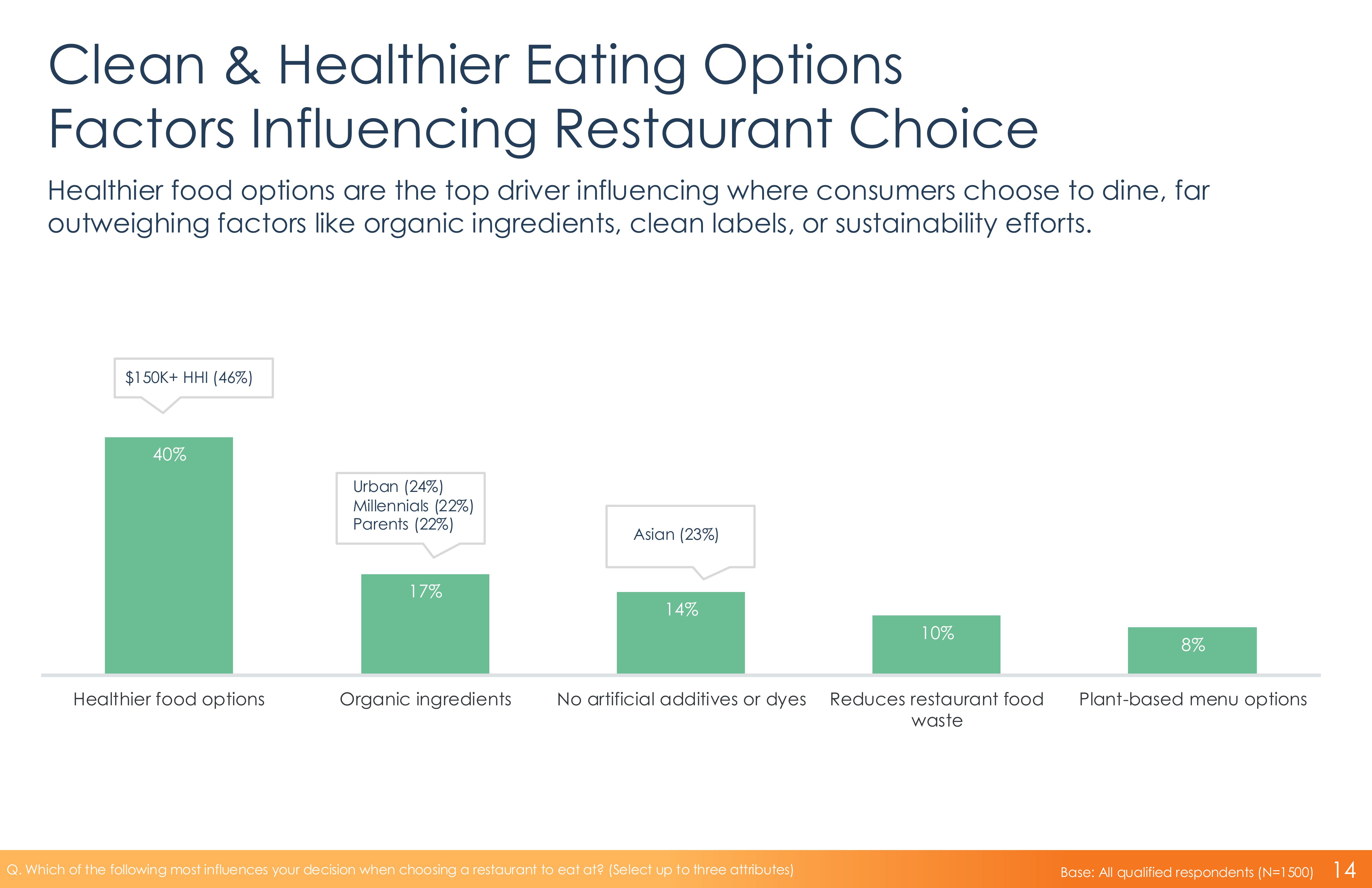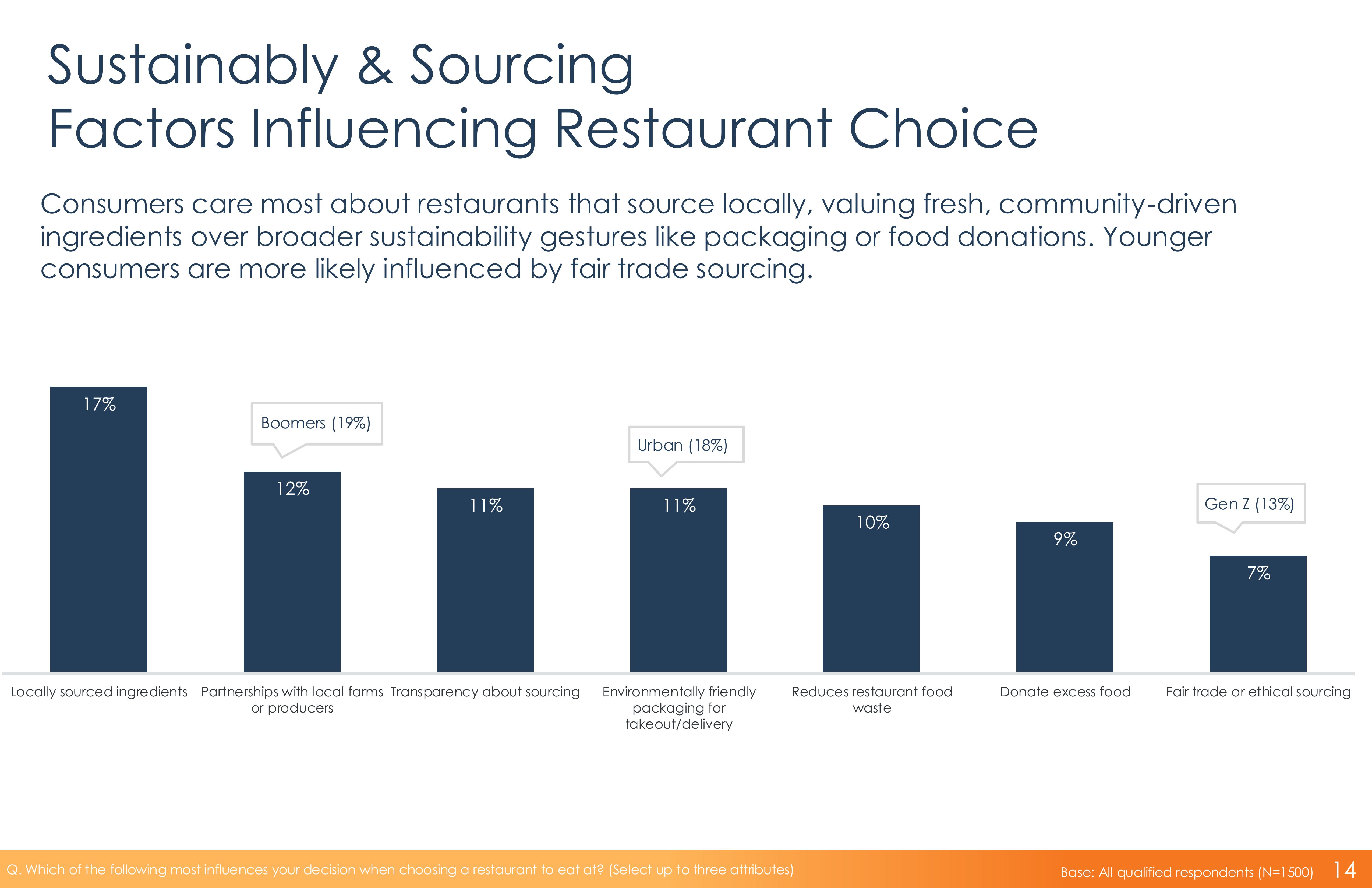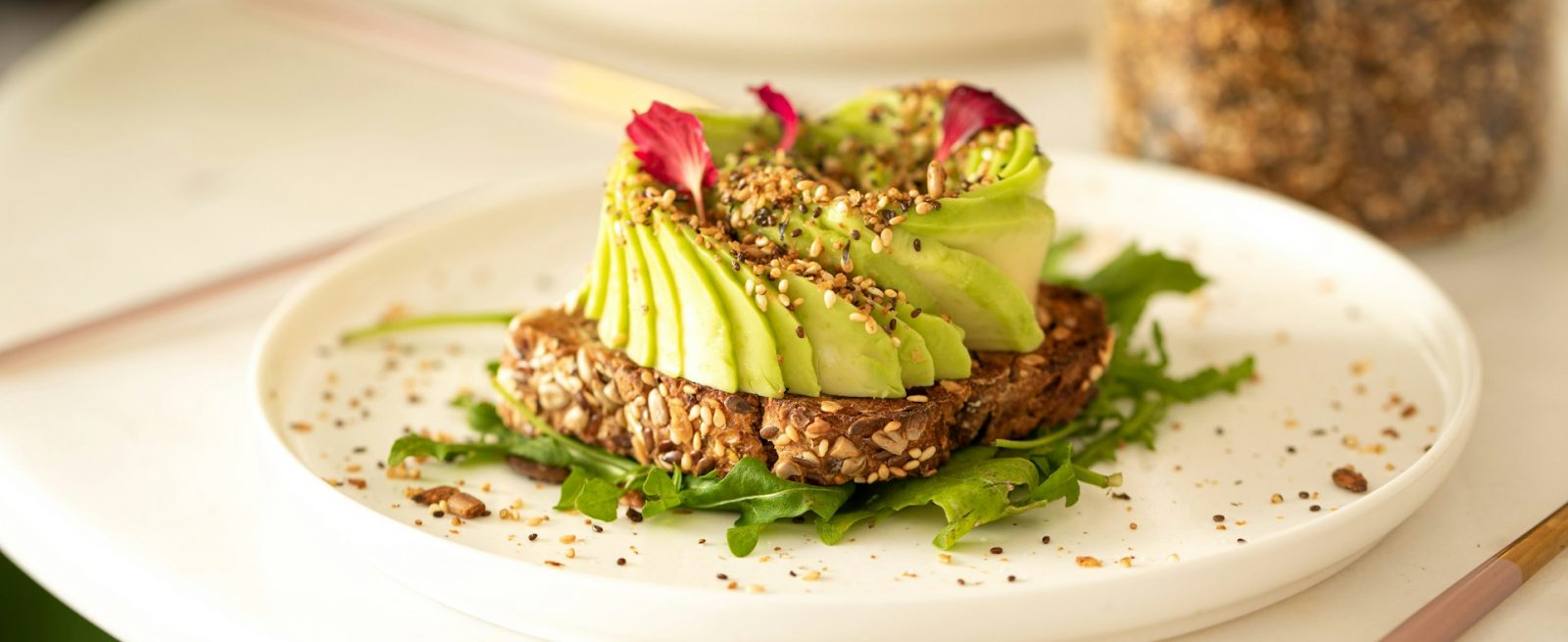Health, Value, and Authenticity Drive Consumer Choices
2 Min Read By MRM Staff
Heading into 2026, diners are prioritizing health-forward options and local sourcing, alongside persistent price sensitivity, as revealed by Provoke Insights’ Restaurant Trends & Consumer Buying Behaviors – Winter 2026.
“Consumers prioritize healthier food above all else when choosing where to dine,” said Carly Fink, President, Head of Research & Strategy for Provoke Insights. “Sustainability resonates, but most diners will only pay more if the cost increase is small.”

Forty percent of respondents said healthier options are the most important factor when choosing a restaurant. Operators can meet the demand for better-for-you by offering nutrient-dense options, transparent ingredient sourcing, and customizable dishes that appeal across different diners, Fink suggested.
While most consumers do care about sustainability, the survey found only 19 percent will pay more regardless of cost with 53 percent only doing so only if the price increase is small. Urban, Millennial, and multicultural diners are the most eco-conscious, while Boomers and rural guests are least influenced.
“Operators should focus on cost-effective, visible efforts like reducing food waste, offering seasonal ingredients, or highlighting low-impact items, to show commitment without pricing out value-sensitive guests,” said Fink. “They can also feature local farms on menus, spotlight producer stories on social media, and rotate seasonal ingredients to showcase freshness and build authenticity with community-driven consumers.”

While inflation concerns have eased since their 2022 peak, 74 percent of consumers still notice price hikes at restaurants more than in any other category. Over half of Americans dine out at least weekly led by urban males, high-income households, and parents. Twenty-six percent dined at a high-end restaurant in the last month, strongest among Millennials (30 percent), urban dwellers (31 percent), and households earning $150K+ (38 percent).
Fast food dominates frequent visits, while full-service restaurants are reserved for occasions. Convenience continues to drive frequency. Loyalty programs, subscriptions, and digital ordering can turn occasional visits into habits.

“With nearly three-quarters of consumers noticing restaurant price hikes, operators can build loyalty by offering transparent pricing, bundling deals with high-perceived value, and reinforcing quality through better-for-you and locally sourced options that justify the cost,” said Fink.
Looking forward, operators should invest in social media, online reviews, and short-form video, which are especially influential among Gen Z and Millennials. Additionally, trust remains high in word-of-mouth and search; making localized digital campaigns and reputation management key, Fink noted.
To meet guest expectations and increase efficiency, operators can look to Artificial Intelligence.
“AI can streamline operations and enhance personalization; two things diners increasingly expect (insights learned from our past research). From smart menu planning based on popular items to personalized loyalty offers and real-time inventory for local ingredients, tech can support both guest satisfaction and cost control.”

